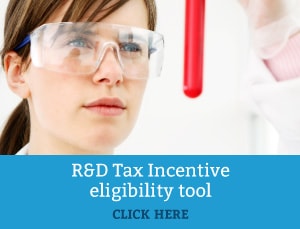Australia’s Attractiveness for Clinical Trials
March 6th, 2019
To bring a new drug to market, an average of 12 years and $1.7 billion (US) in R&D spending is required. Yet only 1 in 5,000 drugs that begin preclinical testing make it to the market. This has led to a disproportionate number of drugs being developed for rare diseases (affecting less than 200,000 in the US at any given time) due to a 25.3% success rate versus 3.4% for oncology. Many argue this is unsustainable and there is pressure to shorten the amount of time it takes to develop drugs.
Over 50% of global clinical trials have treatment sites in the Asia-Pacific region due to the huge number and diversity of participants available (over four billion). Australia is particularly attractive, with over $1 billion AUD invested in R&D each year across more than 1,500 trials. From 2012-2015, clinical trial activity rose by 17.2% compared to 1.8% globally. Australia’s top-notch facilities and quality of medical research are key draw points for pharmaceutical companies.
The refundable R&D tax incentive encourages clinical trial development in Australia, with early phase (I/II and III) often considered core activities. International companies can access the incentive, as the company is necessarily required to be a resident or hold I.P. in Australia. Ultimately, the R&D tax incentive can significantly lower the cost of R&D for global pharmaceutical companies.
*Note this is general information only, and companies should seek specific advice with respect to the eligibility, entitlements on obligations of registering their R&D Activities. More info is available on the websites of the Australian Government Agency Regulators
Categories
- ATO Guidance and Materials
- AusIndustry Guidance and Materials
- Case Law
- Federal Budget 2021
- Federal Budget 2022
- Federal Budget 2024
- For Accountants
- General Information
- Government Policy and Treasury
- Industry Specific Issues
- Interpretative Decisions
- Legislation and Parliamentary Matters
- R&D Tax Credit
- R&D Tax Funding Strategies
- R&D Tax Loans
- Recent News
- Tax Determinations
Archives
- October 2024
- September 2024
- August 2024
- July 2024
- June 2024
- May 2024
- April 2024
- March 2024
- February 2024
- January 2024
- December 2023
- November 2023
- October 2023
- September 2023
- August 2023
- July 2023
- June 2023
- May 2023
- April 2023
- March 2023
- February 2023
- January 2023
- December 2022
- November 2022
- October 2022
- September 2022
- August 2022
- July 2022
- June 2022
- May 2022
- April 2022
- March 2022
- February 2022
- January 2022
- December 2021
- November 2021
- October 2021
- September 2021
- August 2021
- July 2021
- June 2021
- May 2021
- April 2021
- March 2021
- February 2021
- January 2021
- December 2020
- November 2020
- October 2020
- September 2020
- August 2020
- July 2020
- June 2020
- May 2020
- April 2020
- March 2020
- February 2020
- January 2020
- December 2019
- November 2019
- October 2019
- September 2019
- August 2019
- July 2019
- June 2019
- May 2019
- April 2019
- March 2019
- February 2019
- January 2019
- December 2018
- November 2018
- September 2018
- July 2018
- June 2018
- May 2018
- April 2018
- March 2018
- February 2018
- January 2018
- December 2017
- November 2017
- September 2017
- August 2017
- July 2017
- June 2017
- May 2017
- April 2017
- March 2017
- February 2017
- January 2017
- December 2016
- November 2016
- October 2016
- September 2016
- August 2016
- July 2016
- June 2016
- May 2016
- April 2016
- March 2016
- February 2016
- January 2016
- December 2015
- November 2015
- October 2015
- September 2015
- August 2015
- July 2015
- June 2015
- May 2015
- April 2015
- March 2015
- February 2015
- January 2015
- November 2014
- October 2014
- September 2014
- August 2014
- July 2014
- June 2014
- May 2014
- April 2014
- March 2014
- February 2014
- January 2014
- December 2013
- November 2013
- October 2013
- September 2013
- May 2013
- April 2013
- March 2013
- September 2012
- August 2012
- June 2012


 Free Call: 1800 792 676
Free Call: 1800 792 676





 News & Research
News & Research



